Geraniums are beloved by gardeners for their vibrant blooms and versatile uses in both landscape and container gardening. Understanding the proper care and planting techniques is essential for growing healthy and beautiful geraniums. This guide covers everything from selecting the right variety to ongoing care, ensuring your geraniums thrive in any setting. Our gardening blog is a perfect place to find all the information you need!
Understanding Geraniums
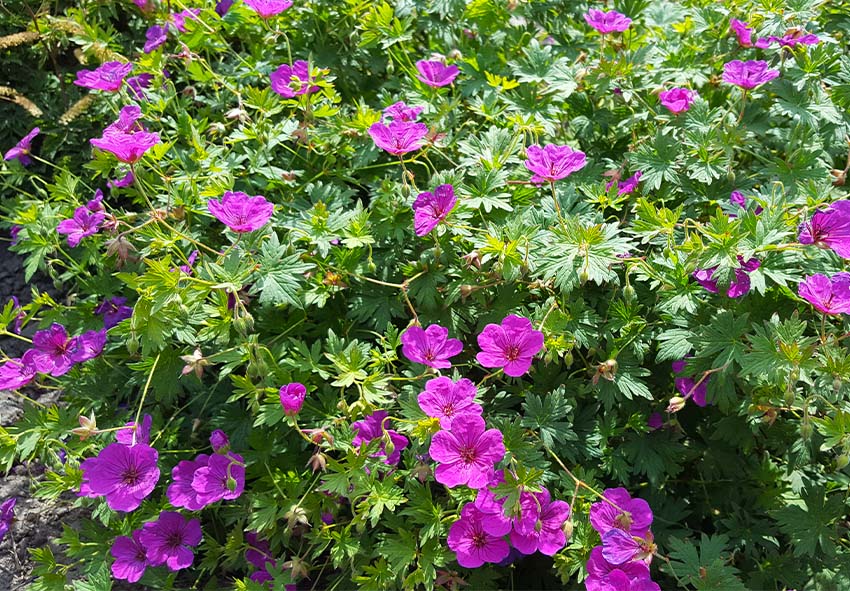
Geraniums are popular garden plants known for their vibrant flowers and versatility in various landscaping designs. They come in multiple varieties, each with unique characteristics and growth habits, making them suitable for a wide range of garden styles and conditions. Understanding the differences between these types is crucial for selecting the right geraniums for your garden and ensuring they thrive.
Types of Geraniums
There are several types of geraniums commonly grown in gardens. Understanding these differences can help you choose the best type for your garden:
| Botanical Name | Color | Flowering Period | Fragrance | Usage |
| Pelargonium hortorum | Red, Pink, White | Late Spring to Fall | Generally Not Fragrant | Bedding, Containers |
| Pelargonium graveolens | Pink, Pale Lavender | Spring to Summer | Strongly Fragrant | Culinary, Aromatherapy |
| Pelargonium x hortorum | Salmon, Pink, Red | Spring to Fall | Not Fragrant | Indoor/Outdoor Containers |
| Pelargonium sidoides | Dark Red, Purple | Winter to Spring | Mild Fragrance | Medicinal, Containers |
| Pelargonium peltatum | Pink, Pale Lavender | Spring to Fall | Generally Not Fragrant | Indoor/Outdoor Containers |
Planting Geraniums
Proper planting is key to the successful growth of geraniums. Whether you are starting from seeds or transplants, choosing the right location and timing your planting correctly can significantly impact the health and blooming of these plants. This section covers everything you need to know about site selection, soil preparation, and the best planting practices for geraniums.
Choosing the Right Location
Geraniums thrive in sunny locations, requiring at least 6-8 hours of direct sunlight daily. This sunlight helps promote vibrant blooms and healthy growth. When planning your garden, consider the space required for each variety, as some geraniums can spread quite broadly, needing ample room to grow without overcrowding.
When to Plant Geraniums
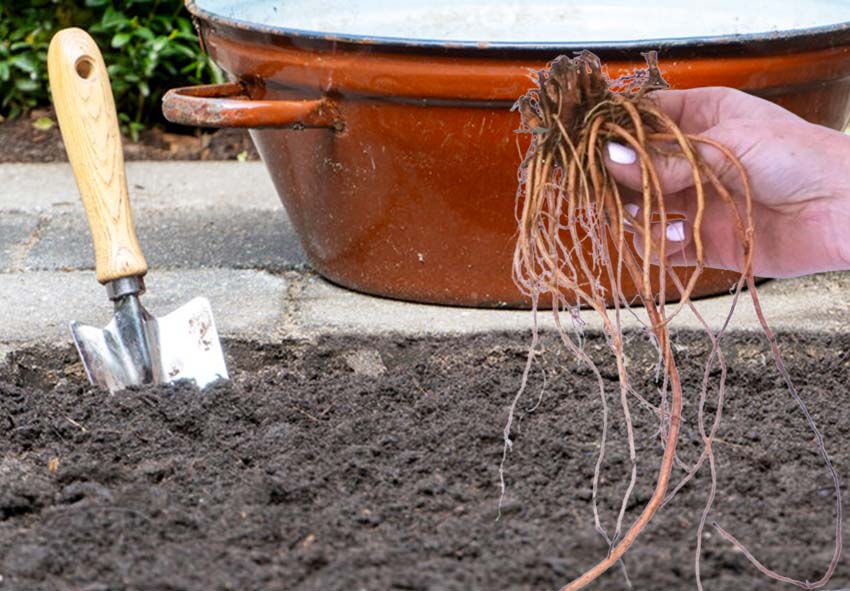
The best time to plant geraniums is in the spring after the last frost has passed. This timing allows the plants to establish themselves as temperatures warm. In warmer climates, geraniums can also be planted in the fall, giving them a head start before the cooler weather.
How to Plant Geranium Seeds and Transplants
Planting geraniums, whether from seeds or transplants, requires careful preparation and attention to detail. Starting from seeds allows for a broader selection of varieties and can be a rewarding process, while transplants provide a quicker route to established plants. This guide provides step-by-step instructions to help you successfully plant geraniums, ensuring healthy growth and beautiful blooms. Here are some tips for planting Geranium seeds:
- Start Indoors: Begin sowing geranium seeds indoors about 8-10 weeks before the last expected frost. This gives the seeds ample time to germinate and develop into sturdy seedlings.
- Use a Sterile Seed-Starting Mix: Fill seed trays or small pots with a sterile seed-starting mix. This type of soil is light and well-draining, reducing the risk of disease.
- Sow Seeds Thinly: Place the seeds on the surface of the soil and cover them lightly with a thin layer of the seed-starting mix, as they require light for germination.
- Provide Warmth and Light: Place the trays in a warm area with temperatures between 70-75°F (21-24°C). Provide plenty of light, either from a sunny window or grow lights, to encourage strong growth.
- Maintain Moisture: Keep the soil consistently moist but not waterlogged. Use a spray bottle to mist the soil, preventing seeds from being washed away.
Once seedlings are large enough to handle, transplant them into individual pots or directly into the garden. Follow this instructions:
- Select Healthy Transplants: Choose transplants with lush, green foliage and no signs of pests or disease. Avoid plants that are root-bound or have spindly growth.
- Prepare the Planting Site: Choose a sunny location with well-draining soil. Amend the soil with compost or organic matter to improve fertility and structure.
- Dig the Right-Sized Hole: Dig a hole slightly larger than the transplant’s root ball. This allows for easy planting and encourages roots to spread out.
- Plant at the Right Depth: Place the geranium in the hole at the same depth it was in the pot. Backfill the hole with soil, gently firming it around the plant to eliminate air pockets.
- Water Thoroughly: Water the newly planted geranium thoroughly to help settle the soil around the roots and provide moisture for the plant to establish.
- Mulch Around Plants: Apply a layer of mulch around the base of the plants to retain soil moisture and suppress weeds, ensuring the geraniums have the best possible start in their new location.
Caring for Geraniums
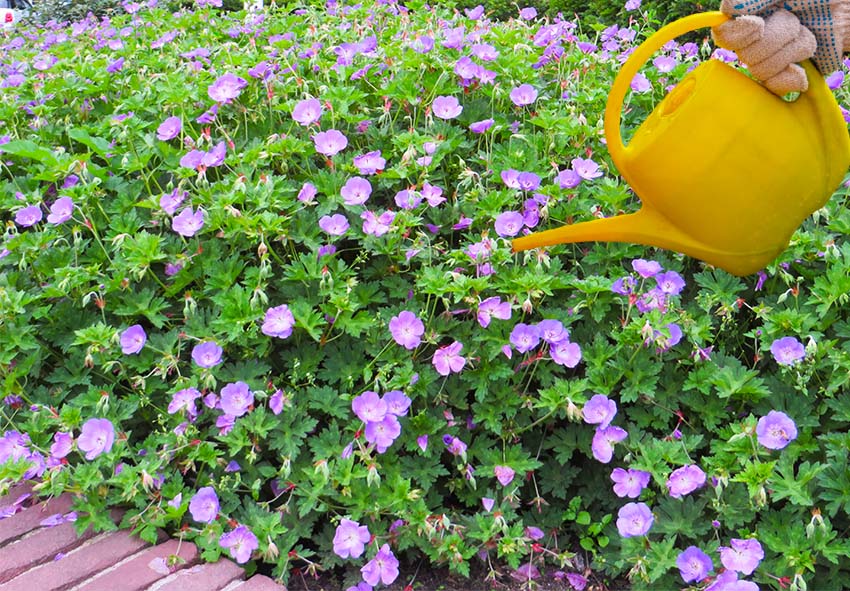
Once planted, geraniums require ongoing care to maintain their health and aesthetic appeal. This involves regular watering, fertilizing, pruning, and protection from pests and diseases. Understanding the specific needs of geraniums at different stages of their growth cycle helps ensure they continue to flourish and provide a stunning display in your garden.
Watering Geraniums
Geraniums prefer evenly moist soil but are somewhat drought-tolerant once established. Water them thoroughly when the top inch of soil feels dry, avoiding overhead watering which can cause fungal diseases. During hot weather, more frequent watering may be necessary.
Fertilizing Geraniums
Use a balanced, water-soluble fertilizer every 4-6 weeks during the growing season to promote robust growth and flowering. Be cautious not to over-fertilize, as this can lead to lush foliage at the expense of blooms.
Pruning and Deadheading
Regular pruning helps maintain a compact shape and encourages more blooms. Deadheading spent flowers is crucial to prevent the plant from wasting energy on seed production. Cut back stems to just above a leaf node to encourage new growth.
Mulching and Weed Control
Mulching around geraniums helps retain soil moisture and suppresses weeds, reducing competition for nutrients. Organic mulch, like compost or shredded bark, is recommended as it also improves soil quality.
Seasonal Care for Geraniums
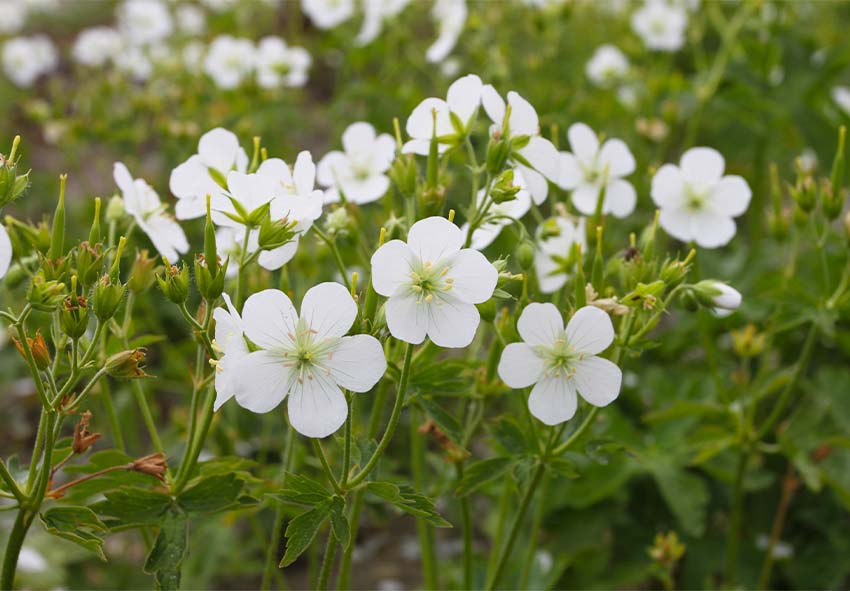
Geraniums require tailored care throughout the year to maintain their vigor and beauty. Each season brings different challenges and needs, from spring’s preparation and growth to winter’s protection. Seasonal care involves adjusting watering, pruning, and protection strategies to suit the changing weather conditions, ensuring that your geraniums remain healthy and vibrant all year round.
- Spring Care
In spring, clean up any winter debris and prune back dead or damaged stems. This preparation helps the plants to channel energy into new growth.
- Summer Care
Monitor for pests such as aphids and spider mites, which are more active in warm weather. Regularly check the plants and use appropriate treatments if necessary.
- Fall Care
As temperatures drop, reduce watering and prepare the plants for winter by removing any remaining dead foliage.
- Winter Care
In colder climates, geraniums should be brought indoors or treated as annuals. For perennial varieties, consider overwintering by cutting back the plants and keeping them in a cool, frost-free location.
Common Issues and Solutions
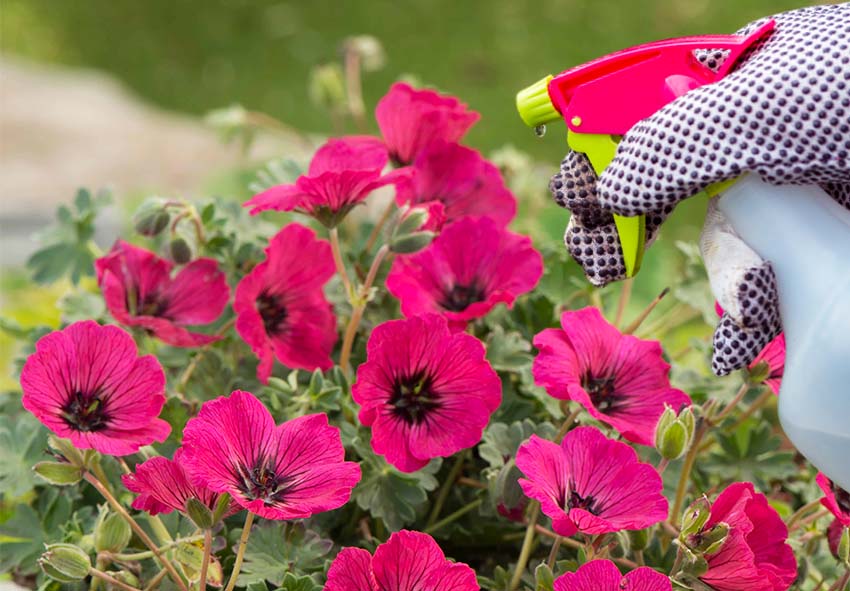
Despite being hardy and generally low-maintenance, geraniums can still encounter problems such as pests, diseases, and environmental stresses. Common issues include pests like aphids and diseases like powdery mildew, which can affect the plant’s health and appearance. Understanding these potential problems and knowing how to address them quickly is key to maintaining a thriving garden.
Pests and Diseases
Pest and disease control is an important part of caring for your Geranium plants. Common pests include:
- Aphids: Small, sap-sucking insects that can cause distorted growth and yellowing leaves.
- Spider Mites: Tiny pests that create fine webbing and cause leaves to become stippled and discolored.
- Caterpillars: Larvae that chew holes in leaves and can significantly damage foliage.
At the same time, common diseases include:
- Powdery Mildew: Fungal disease characterized by white, powdery spots on leaves and stems.
- Bacterial Blight: Causes black spots, wilting, and can lead to plant death if untreated.
- Root Rot: Typically caused by overwatering, leading to mushy roots and plant decline.
In addition, geraniums can also experience other types of problems during and after growing, such as:
- Growth Problems: Poor flowering or stunted growth can be due to inadequate light, nutrients, or water. Adjusting these conditions usually resolves the issues.
- Leaf and Flower Damage: Leaf and flower damage may result from pests, diseases, or environmental factors. Identifying and addressing the cause promptly helps keep plants healthy.
Benefits of Growing Geraniums
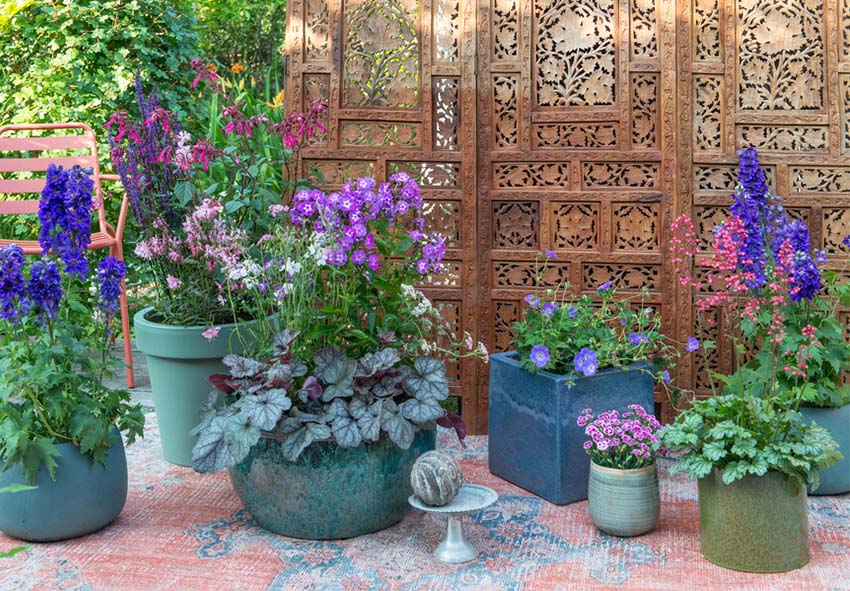
Geraniums are a favorite among gardeners not just for their beautiful blooms but also for their versatility and ease of care. They can be grown in containers, as bedding plants, or even indoors, adding color and fragrance to any space. Additionally, their ability to attract pollinators and their fragrant foliage make them a valuable addition to any garden. Growing geraniums offers both aesthetic and practical benefits, enhancing the garden experience.
Aesthetic Appeal
Geraniums are renowned for their vibrant and diverse flower colors, ranging from shades of pink, red, and purple to white and orange. This broad color palette makes them a versatile choice for gardeners looking to add a splash of color to their landscapes. The flowers, often grouped in lush clusters, vary in shape from rounded to star-like forms, providing visual interest and texture. Geraniums are also valued for their lush green foliage, which can be either smooth or intricately lobed, adding to their aesthetic appeal. Their ability to bloom continuously throughout the growing season ensures a long-lasting display of color, making them ideal for garden beds, borders, and containers.
Fragrance and Uses
In addition to their visual appeal, many geranium varieties are cherished for their aromatic foliage. The leaves of scented geraniums emit a range of delightful fragrances, from minty and citrusy to rose-like and spicy, depending on the variety. This fragrant foliage is often harvested for use in making sachets, potpourris, and essential oils, adding a pleasant aroma to indoor spaces. Geraniums are also utilized in culinary and herbal practices, where their leaves can flavor teas, desserts, and salads. Their versatility extends to their use in garden design, where they serve as attractive accents in mixed borders, hanging baskets, and window boxes. Indoors, geraniums thrive as houseplants, bringing a touch of nature’s beauty and fragrance into the home environment.
Conclusion
Growing geraniums can be a rewarding experience, offering a splash of color and pleasant fragrance to your garden. With proper planting and care, these versatile plants will thrive and beautify your outdoor spaces. Enjoy the process and the beauty that geraniums bring to your garden!
Frequently Asked Questions (FAQs) about Geranium
1. When is the best time to plant geraniums?
The best time to plant geraniums is in the spring after the last frost has passed. This ensures that the plants have ample time to establish themselves before the summer heat. If starting from seeds, sow them indoors about 8-10 weeks before the last expected frost. For transplants, wait until the outdoor temperatures are consistently warm.
2. Can I order dutch geraniums from your online store?
Yes, we offer a wide selection of geraniums, including some varieties originating from Holland, renowned for their quality and beauty. Our online store Dutch-bulbs.com features a diverse range of geranium. Explore our collection to find the perfect geranium varieties for your garden or landscaping projects.
3. How often should I water my geraniums?
Geraniums prefer well-draining soil and should be watered when the top inch of soil feels dry. Generally, this means watering about once a week, but the frequency may vary depending on weather conditions and soil type. Overwatering can lead to root rot, so it’s important to let the soil dry out between waterings.
4. How do I care for geraniums during the winter?
In colder climates, geraniums can be overwintered indoors. Before the first frost, move them inside to a bright location with temperatures between 55-70°F (13-21°C). Reduce watering during the winter months to avoid overwatering. If you live in a warmer climate, protect outdoor geraniums with mulch or cover them during extreme cold spells.
5. What should I do if my geraniums develop pests or diseases?
If you notice pests such as aphids or spider mites, treat them with insecticidal soap or neem oil. For fungal diseases like powdery mildew, ensure good air circulation and avoid overhead watering. Remove and dispose of affected plant parts to prevent the spread. Regularly inspecting your plants and maintaining proper care can help prevent most pest and disease issues.
Published: 26.07.2024
